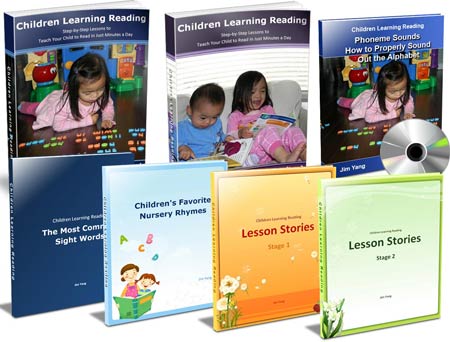Teaching Phonics to Children
By: ChildrenLearningReading.com
Phonics is a vital component of any effective method of teaching children to read. It involves teaching children the relationships between sounds and letters, and how to use that knowledge to read and write words. Developing phonemic awareness and a strong knowledge of phonics is crucial in mastering words, which is the first key step toward successful reading.
Through phonics instruction, children learn to recognize the sounds represented by letters, and how to combine those sounds to form words. This process of decoding allows children to read new words with ease, expanding their vocabulary and improving their reading comprehension. Furthermore, by understanding the connections between letters and sounds, children can develop clearer articulation and improve their spelling skills.
Teaching phonics and developing phonemic awareness also helps children gain self-confidence in their reading abilities. As they become more comfortable with reading and decoding words, they are more likely to enjoy the reading process and become independent readers.
To successfully teach your children to read, three fundamental principles must be included:
- It's important to make reading enjoyable for your child by choosing books, stories, and topics that appeal to their interests.
- Avoid pressuring or forcing your child to read, as this can turn it into a negative experience. Instead, make reading a fun and rewarding activity that they look forward to. This may require patience and creativity on the part of the parents.
- Start by teaching your child the individual sounds, or phonemes, that make up words. Mastering phonics is an essential first step toward reading success.
The process of teaching phonics and phonemic awareness to children involves a step-by-step approach. First, children are taught the letters and their corresponding sounds. Then, they are taught how to blend these sounds together to form words. Once they have mastered this skill, children can move on to reading simple sentences and stories. This logical progression allows children to develop accuracy in decoding and pronouncing words, as well as improving their spelling abilities. With time, children combine the different elements of phonics to produce new words, leading to the discovery of new words as they develop an "automatic reflex" for the process.
When it comes to teaching phonics to children, it is recommended to dedicate 10 to 15 minutes each day to these lessons. These sessions can be broken down into several small intervals, such as 4 or 5 sessions lasting between 3 to 5 minutes each. For older pre-school children, lessons can be slightly longer, but several minutes per session are sufficient.
One way to begin teaching phonics to children is through ear training, where they develop an understanding that words are made up of smaller sound units called phonemes. By combining these sounds, a word is formed. Short sessions, as previously mentioned, are recommended, with just a few minutes each day being all that is needed. Consistency and patience are key.
During the short daily sessions of 3 to 5 minutes, parents can teach phonics to their children by sounding out words slowly and distinctly. This involves helping children understand that words are made up of smaller sounds or phonemes, which are combined to form words. Parents can use everyday words and include oral blending sounds in their sentences, such as when you ask your child to drink his milk you try sounding out "drink" and "milk" as "d-r-i-n-k" and "m-ilk" The words drink and milk are sounded out slowly and distinctly to help children develop phonemic awareness. The level of sound separation can be adjusted to increase or lower the difficulty, with options like blending "drink" as "dr-ink" to ease understanding for struggling learners.
You can also make phonics fun for your child by playing blending sound games with them. Choose different words and say the sounds slowly, then ask your child to guess what word you are saying.
It may take some time for your child to grasp the concept of individual sounds forming words. While some children will pick it up quickly, others may take longer. However, with consistency, your child will eventually catch on. Here are some sample words that can be used to play blending sounds activities with your child:
J-u-m-p J-ump
R-u-n R-un
S-i-t S-it
S-t-a-n-d St-and
M-i-l-k M-ilk
S-t-o-p St-op
The first word is more segmented than the second word, and will be more difficult to sound out. Please note that hyphens are used to indicate the letter sounds instead of slashes
ie: J-u-m-p /J/ /u/ /m/ /p/
This is important to make words easier to read; however, when you read it, you should say the sounds of the letters not read the names of the letters. This type of ear training for phonics and phonemic awareness should continue throughout the teaching process, even well after your child have grasped this concept. It can be applied to words with increasing difficulty. Please always keep in mind that not all children can readily blend the sounds to hear the word, so Parents need to be patient, and practice for days, weeks, or even months if necessary. Consistency and frequency is the key to success here, and not sporadic binge sessions
If you would like to learn about a simple step-by-step program designed to easily teach your children how to read, please click here.


